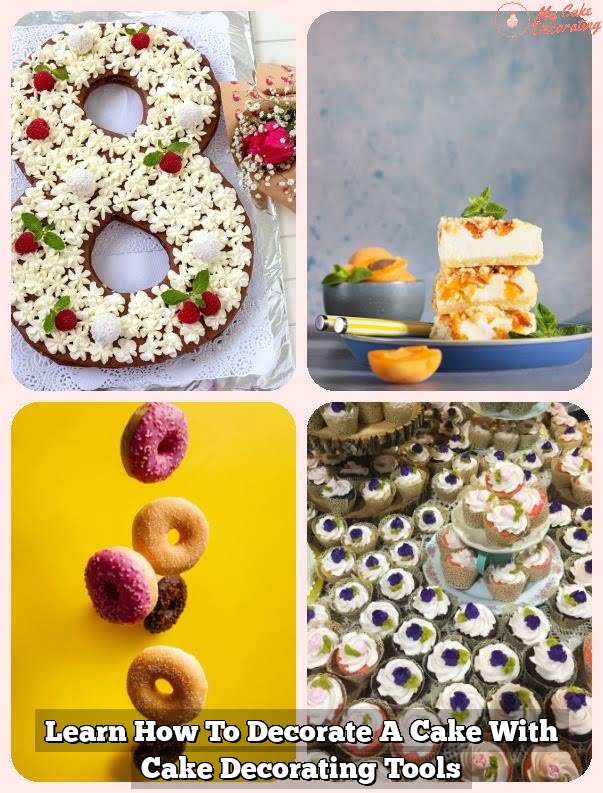Are you looking to add a stunning and professional-looking touch to your homemade cakes? Look no further, as we will guide you through the art of decorating cakes with rosettes. Whether you’re a beginner or an experienced baker, mastering the technique of creating rosettes is sure to impress your friends and family at any gathering.
Rosettes are delicate, intricate swirls of frosting that can transform any ordinary cake into a masterpiece. This article will provide you with all the essential information and tips on how to achieve beautifully decorated cakes using this elegant technique. From choosing the right frosting to troubleshooting common issues, we’ve got you covered.
This introductory section will provide an overview of what rosettes are and why they are an ideal choice for cake decoration. We’ll explore the tools and materials needed, as well as different frosting options that work best for creating rosettes. The following sections will dive deeper into each step of the process, offering helpful tips and techniques for creating flawless rosettes on your cakes. So, let’s get started on your journey to becoming a cake decorating pro.
Tools and Materials
Creating beautiful rosettes on a cake requires the right tools and materials. To start, you will need a piping bag, piping tips (such as star tips), and a coupler to attach the tip to the piping bag. These can be found at any baking supply store or online. Additionally, having a turntable for easy maneuvering of the cake while decorating is essential.
In terms of materials, you will need frosting in your desired color, which can be either buttercream or cream cheese frosting for best results. Other materials include a cake stand or cake board to place the cake on for easy decorating, as well as any additional decorations such as edible pearls, sprinkles, or edible glitter for added flair.
| Tools | Materials |
|---|---|
| Piping bag | Frosting in desired color |
| Piping tips (star tips recommended) | Cake stand or cake board |
| Coupler | Additional decorations (pearls, sprinkles, etc.) |
Choosing the Right Frosting
When it comes to decorating cakes with rosettes, choosing the right frosting is essential for achieving the best results. Different types of frosting can produce varying textures and designs, so it’s important to select the one that works best for piping beautiful rosettes. Here are some popular options for frostings that work well for creating rosettes:
- Buttercream Frosting: Buttercream is a classic choice for creating rosettes on cakes. Its smooth and creamy texture makes it easy to pipe intricate designs, and it holds its shape well once piped onto the cake.
- Cream Cheese Frosting: Cream cheese frosting is another popular option for decorating with rosettes. It has a slightly tangy flavor and a thicker consistency, which can result in more defined and sturdy rosette shapes.
- Whipped Cream Frosting: Whipped cream can also be used to create delicate and fluffy rosettes on cakes. However, it is important to stabilize the whipped cream with gelatin or another stabilizer to ensure that the rosettes hold their shape and do not deflate over time.
Each type of frosting has its own unique characteristics, so it’s important to consider the desired flavor, texture, and stability when selecting the right frosting for creating rosettes on a cake.
In addition to considering the type of frosting, it’s also important to choose a color that complements the overall design of the cake. Whether using traditional white buttercream or adding food coloring for a pop of color, the chosen frosting should enhance the visual appeal of the rosette decorations.
Preparing the Cake
When it comes to decorating a cake with rosettes, properly preparing the cake is essential to ensure that the final product looks as delightful as possible. Here are some tips on how to prepare the cake before adding rosette decorations:
Leveling and Frosting
Before you can start creating rosettes on your cake, it’s important to ensure that the surface of the cake is level and smooth. Use a serrated knife or a cake leveler to trim off any uneven or domed areas on the top of the cake. Once leveled, apply a thin layer of frosting, also known as a crumb coat, to seal in any loose crumbs. This will provide a smooth base for piping rosettes.
Chilling the Cake
After applying the crumb coat, it’s recommended to chill the cake in the refrigerator for at least 20-30 minutes. Chilling the cake will help set the crumb coat and make it easier to work with when piping the rosettes. It also helps to prevent the cake from crumbling or shifting while adding decorations.
Choosing the Right Size Cake
The size of your cake can also affect how well rosettes will look when piped onto it. It’s important to consider that smaller cakes may not be suitable for larger rosette designs, while larger cakes may require more frosting and time to create enough rosettes for full coverage. Therefore, carefully consider the size of your cake in relation to your desired rosette design before starting decoration.
By following these tips for preparing your cake before decorating with rosettes, you’ll set yourself up for success when it comes time to add this beautiful decoration to your creation. Next, we will move on to a step-by-step guide on how to pipe and create beautiful rosettes on your prepared cake.
Creating the Rosettes
Once you have selected the right frosting for your cake, it’s time to start creating the rosettes. To create beautiful rosettes, you will need a piping bag fitted with a large open-star tip. This will give your rosettes a lovely textured look that adds visual interest to your cake.
To begin, hold the piping bag at a 90-degree angle to the surface of the cake. Starting from the center of where you want the rosette to be, apply pressure to the piping bag and swirl in a circular motion working your way outwards. As you reach the desired size for the rosette, release pressure and pull up quickly to create a pointed peak. Repeat this process for each rosette, making sure to space them evenly around the cake.
As you pipe the rosettes onto the cake, keep in mind that practicing on a flat surface can help you get comfortable with applying even pressure and creating consistent shapes. For an added decorative touch, consider using multiple colors of frosting and mixing up different sizes of rosettes. This can add depth and dimension to your cake design.
| Step | Description |
|---|---|
| 1 | Hold piping bag at 90-degree angle |
| 2 | Apply pressure and swirl in circular motion |
| 3 | Pull up quickly to create pointed peak |
Different Rosette Techniques
Creating rosettes on a cake can add an elegant and eye-catching touch to any dessert. There are various techniques that can be used to create different styles of rosettes, allowing for creativity and customization. Here are some different rosette techniques to explore when decorating a cake:
- Traditional Swirl Rosettes: To create the classic swirl rosette, start in the center of the cake and pipe a small amount of frosting while continuously swirling outward in a circular motion. This technique creates a beautiful and timeless rosette pattern that is perfect for all occasions.
- Drop Flower Rosettes: For a more delicate and dainty look, consider using the drop flower technique to create rosettes. Using a small star piping tip, gently squeeze out small amounts of frosting in a circular motion, allowing it to naturally form into a flower-like shape. This technique adds an elegant and whimsical touch to any cake.
- Ruffled Rosettes: To add texture and dimension to the cake, try using the ruffled rosette technique. With a petal piping tip, create rosettes by layering thin petals on top of each other in a circular motion, creating a ruffled effect. This technique adds visual interest and depth to the cake’s design.
Experimenting with different rosette techniques can help elevate the overall look of the cake and make it stand out as a stunning centerpiece for any celebration or event. Whether opting for traditional swirls or more intricate designs, there are countless ways to create beautiful rosettes that suit any style or occasion.
Adding Finishing Touches
Edible Flowers and Greenery
One of the most popular ways to add a beautiful finishing touch to a cake decorated with rosettes is by incorporating edible flowers and greenery. Fresh flowers such as roses, violets, or pansies can be used to add a pop of color and elegance to the cake.
It’s important to ensure that the flowers are pesticide-free and safe for consumption before placing them on the cake. Additionally, delicate edible greenery such as mint leaves or microgreens can be strategically placed around the rosettes to create a visually appealing aesthetic.
Decorative Sprinkles and Edible Pearls
Another way to enhance the look of a cake adorned with rosettes is by adding decorative sprinkles or edible pearls. These small embellishments can provide texture, shine, and a touch of whimsy to the overall design.
Sprinkles come in various shapes, sizes, and colors which makes it easy to coordinate them with the theme or color scheme of the cake. Similarly, edible pearls can be used to create an elegant and sophisticated finish that adds a luxurious touch to the cake.
Chocolate Garnishes
Incorporating chocolate garnishes is another fantastic way to add an extra element of decoration to a cake with rosettes. Chocolate curls, shavings, or molded chocolate shapes can be strategically placed around the perimeter of the cake or nestled between rosettes for an eye-catching display.
Dark, milk, or white chocolate can be used depending on personal preference and flavor combinations with other components of the cake. Furthermore, drizzling melted chocolate over the top of the rosettes adds an artistic flair and decadent touch that enhances visual appeal.
Troubleshooting
Decorating a cake with rosettes can be a fun and rewarding experience, but like any art form, it comes with its own set of challenges. Common issues when decorating with rosettes include inconsistency in size and shape of the rosettes, frosting that is too stiff or too runny, and difficulty in creating symmetrical patterns. These issues can make your cake look less than perfect, but fear not – there are ways to fix these mistakes and achieve beautiful results.
One common problem when creating rosettes is inconsistency in the size and shape of the flowers. This can be due to inconsistent pressure while piping or uneven frosting consistency. To fix this issue, practice piping on a separate surface before applying the rosettes to your cake.
This will help you get a feel for the right amount of pressure needed to create consistent rosettes. Additionally, ensuring that your frosting is the right consistency – not too stiff or too runny – will also help improve the uniformity of your rosettes.
Another issue that may arise when decorating with rosettes is difficulty in creating symmetrical patterns. This can be frustrating, especially if you have already invested time and effort into decorating your cake. One way to fix this issue is by using a template or guide to mark where each rosette should be piped onto the cake. This will help you maintain symmetry and achieve an aesthetically pleasing result.
Lastly, dealing with frosting that is too stiff or too runny can also be a common problem when decorating with rosettes. If your frosting is too stiff, try adding small amounts of milk or cream to loosen it up. On the other hand, if your frosting is too runny, gradually add more powdered sugar until it reaches the desired consistency. Taking these steps will help ensure that your frosting is just right for creating beautiful rosettes on your cake.
Conclusion
In conclusion, decorating a cake with rosettes can truly elevate the overall look and appeal of the dessert. By using the right tools and materials, choosing the appropriate frosting, properly preparing the cake, and following the step-by-step guide for creating beautiful rosettes, anyone can achieve stunning results. Additionally, exploring different rosette techniques and adding finishing touches can further enhance the visual impact of the cake.
It’s important to remember that practice makes perfect when it comes to mastering the art of creating rosettes on a cake. Don’t be discouraged by any initial challenges or mistakes – troubleshooting common issues and learning from them is all part of the process. With a bit of patience and creativity, anyone can become skilled at decorating cakes with rosettes.
So why not give it a try? Whether it’s for a special occasion or simply to indulge in some creative baking, decorating your own cakes with rosettes can be a rewarding experience. The satisfaction of seeing a beautifully adorned cake that you decorated yourself is truly unmatched. So go ahead, gather your tools and ingredients, and let your imagination run wild as you decorate your next cake with stunning rosettes.
Frequently Asked Questions
How Do You Get Rosettes to Stick to a Cake?
To get rosettes to stick to a cake, it’s important to make sure that the surface of the cake is clean and dry. Applying a thin layer of frosting or icing to the back of each rosette before placing it on the cake can help them adhere better.
Pressing gently on each rosette as you place it on the cake can also help them stick.
What Kind of Cake Tip Do You Use to Make Rosettes?
The kind of cake tip that is typically used to make rosettes is a closed star tip, such as a Wilton 1M or 2D tip. These tips have small ridges and create a beautiful textured effect when making rosettes.
How Do You Keep Rosettes From Falling Off a Cake?
To keep rosettes from falling off a cake, it’s important to make sure that they are well-affixed. Placing the rosettes close together can help provide added support for each one.
Additionally, refrigerating the cake for a short amount of time after piping on the rosettes can help firm up the frosting and keep them in place. If transporting a cake with rosettes, it’s best to keep the cake chilled and handle it carefully to prevent any movement or shifting that could cause the rosettes to fall off.

Welcome to my blog about home and family. This blog is a place where I will share my thoughts, ideas, and experiences related to these important topics. I am a stay-at-home mom with two young children. I hope you enjoy reading it! and may find some helpful tips and ideas that will make your home and family life even better!





